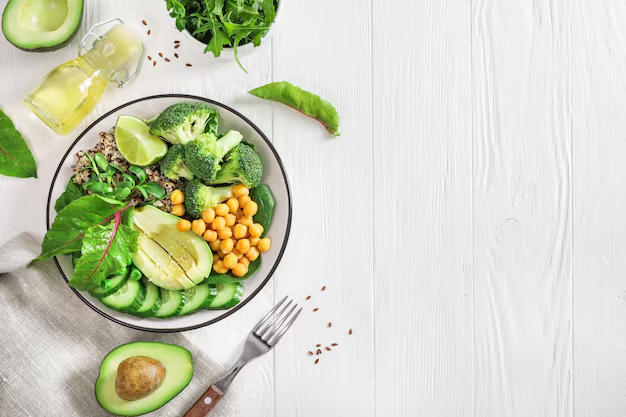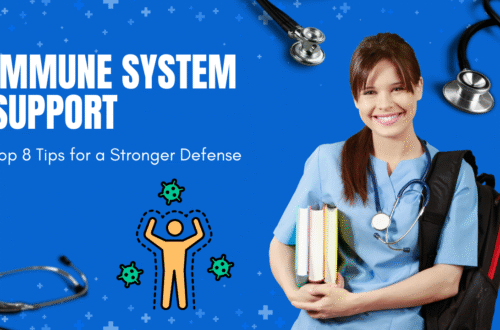In today’s fast-paced world, the importance of eating healthy cannot be overstated. Whether your goal is to lose weight, boost energy, improve your immune system, or simply live longer, one of the most powerful tools at your disposal is food. More specifically—healthy foods.
This comprehensive guide covers everything you need to know about healthy foods, their benefits, and practical ways to include them in your daily life. We’ll also explore the Top 8 Tips for making healthy eating sustainable and enjoyable.
🌱 What Are Healthy Foods?
Healthy foods are the cornerstone of good nutrition and long-term wellness. They come from natural sources and are minimally processed, ensuring they retain their full nutritional value. Unlike processed foods, healthy options are rich in essential nutrients that your body needs to thrive.

These nutrient-dense foods provide a powerful combination of vitamins, minerals, fiber, and antioxidants. Examples include leafy greens, berries, whole grains, lean proteins, and nuts. Such foods fuel your body, support immune health, aid digestion, and help reduce the risk of chronic diseases like heart disease and diabetes.
Most importantly, healthy foods do not contain harmful additives, excessive sugars, refined salts, or unhealthy fats. They work in harmony with your body, promoting balanced energy, clearer skin, better mental focus, and improved overall vitality. Incorporating more healthy foods into your daily meals is one of the simplest and most effective ways to take control of your health.
Examples of Healthy Foods:
- Fruits (e.g., berries, apples, bananas, oranges)
- Vegetables (e.g., spinach, broccoli, carrots, kale)
- Whole grains (e.g., brown rice, oats, quinoa)
- Lean proteins (e.g., chicken breast, tofu, beans, fish)
- Healthy fats (e.g., avocados, nuts, olive oil)
- Legumes and pulses (e.g., lentils, chickpeas)
These foods fuel your body, support organ function, maintain strong immunity, and improve your overall well-being.
💪 Benefits of Eating Healthy Foods
Eating healthy foods consistently can lead to noticeable improvements in every aspect of your life:
1. Boosts Energy Naturally
Whole foods digest slowly, providing steady energy without crashes. Complex carbs like oats and sweet potatoes release glucose gradually.
2. Improves Mental Health
Foods rich in omega-3 (like fatty fish) and antioxidants (like berries) are linked to lower rates of anxiety and depression.
3. Supports Weight Management
High-fiber, low-calorie foods like veggies and legumes keep you full longer and reduce the urge to snack.
4. Promotes Heart Health

Nutrients like potassium, magnesium, and healthy fats reduce cholesterol and lower blood pressure.
5. Enhances Immune Function
Vitamin C (found in citrus fruits), zinc (nuts/seeds), and probiotics (yogurt) help your body fight off illness.
6. Reduces Chronic Disease Risk
Eating more whole, plant-based foods is proven to lower the risk of type 2 diabetes, obesity, and even cancer.
🧠 Top 8 Tips for Eating Healthy Foods
Here are the most effective tips for making healthy foods a regular part of your lifestyle:
✅ Tip 1: Prioritize Whole Foods Over Processed Ones
One of the easiest ways to improve your diet is by focusing on healthy foods that are as close to their natural state as possible. These are known as whole foods, which are unprocessed or minimally processed, allowing them to retain their full nutritional value. Whole foods supply essential nutrients your body needs to function at its best.
Examples of healthy foods in their whole form include fresh vegetables, seasonal fruits, whole grains like oats and quinoa, and lean proteins such as chicken, fish, and eggs. These foods are packed with fiber, antioxidants, vitamins, and minerals that support energy, digestion, and overall health.
To maximize the benefits of healthy foods, avoid items with long ingredient lists, artificial preservatives, added sugars, and unhealthy fats. Processed products often strip away nutrients and add substances your body doesn’t need. Sticking to whole, healthy foods promotes a cleaner, more sustainable way of eating every day.
Simple Swap: Replace sugary breakfast cereals with overnight oats topped with fruit and nuts.
✅ Tip 2: Balance Every Plate
Building a balanced plate with healthy foods is essential for maintaining energy, focus, and long-term health. One simple rule is to include a protein source, healthy fat, and complex carbohydrates in every meal. This trio provides the body with sustained fuel and essential nutrients.
Proteins, such as eggs, beans, tofu, chicken, or fish, help build and repair tissues while keeping you satisfied for longer. Healthy fats like those found in avocados, nuts, seeds, and olive oil support brain function and hormone balance. Complex carbs from whole grains, sweet potatoes, and vegetables offer fiber and slow-burning energy.
When you consistently build meals using a variety of healthy foods, you promote balanced blood sugar levels and improved digestion. This not only prevents energy crashes and cravings but also encourages mindful eating habits. Over time, this approach supports weight management, gut health, and overall well-being.
Balanced Plate Example: Grilled salmon + quinoa + steamed broccoli with olive oil drizzle.
✅ Tip 3: Cook More at Home
Cooking at home is one of the most effective ways to improve your diet and lifestyle. It gives you full control over the ingredients you use, as well as the portion sizes, helping you avoid unnecessary calories and unhealthy additives found in restaurant or packaged meals.

When you cook for yourself, you’re more likely to choose fresh, healthy foods such as vegetables, whole grains, lean proteins, and heart-healthy fats. This not only ensures better nutrition but also enhances the flavors of your meals without relying on excess sugar, salt, or artificial ingredients.
Preparing your own meals with healthy foods also fosters a deeper connection with what you eat. It encourages mindful eating, reduces reliance on fast food, and makes it easier to meet your wellness goals. Over time, home-cooked meals support better digestion, increased energy, and a stronger foundation for long-term health.
Easy Start: Try meal prepping with healthy stir-fries, soups, or one-pan sheet meals.
✅ Tip 4: Eat the Rainbow
Eating a wide range of colorful fruits and vegetables is a smart way to boost your intake of healthy foods. Each vibrant color in produce isn’t just beautiful—it represents unique phytonutrients and antioxidants that support your overall health.
For example, red foods like tomatoes and strawberries are rich in lycopene, which supports heart health. Orange and yellow foods such as carrots and sweet potatoes provide beta-carotene for eye and skin health. Green vegetables like spinach and broccoli are packed with vitamins K, C, and folate, while blue and purple foods like blueberries and eggplant offer brain-boosting anthocyanins.
By choosing a variety of colorful healthy foods throughout the week, you naturally provide your body with a full spectrum of nutrients. This practice not only makes your meals more visually appealing but also strengthens your immune system, improves digestion, and supports long-term wellness from the inside out.
Example: Red (tomatoes), Orange (carrots), Yellow (peppers), Green (spinach), Blue (blueberries), Purple (eggplant).
✅ Tip 5: Don’t Fear Healthy Fats
When it comes to healthy foods, fats often get misunderstood. Not all fats are harmful—in fact, some are absolutely essential for good health. The key is choosing the right kinds of fats that support your body rather than harm it.
Omega-3 fatty acids and monounsaturated fats are found in many healthy foods such as salmon, walnuts, flaxseeds, avocados, and olive oil. These fats play a vital role in maintaining brain function, supporting heart health, and reducing inflammation in the joints. They also help your body absorb fat-soluble vitamins like A, D, E, and K.
Including the right types of fat in your diet through healthy foods ensures your meals are not only more satisfying but also nutritionally balanced. Instead of avoiding fats altogether, focus on replacing saturated and trans fats with healthier options to boost energy, protect vital organs, and support overall wellness.
Top Picks: Avocados, walnuts, flaxseeds, chia seeds, and olive oil.
✅ Tip 6: Read Food Labels Carefully
When it comes to healthy foods, fats often get misunderstood. Not all fats are harmful—in fact, some are absolutely essential for good health. The key is choosing the right kinds of fats that support your body rather than harm it.
Omega-3 fatty acids and monounsaturated fats are found in many healthy foods such as salmon, walnuts, flaxseeds, avocados, and olive oil. These fats play a vital role in maintaining brain function, supporting heart health, and reducing inflammation in the joints. They also help your body absorb fat-soluble vitamins like A, D, E, and K.
Including the right types of fat in your diet through healthy foods ensures your meals are not only more satisfying but also nutritionally balanced. Instead of avoiding fats altogether, focus on replacing saturated and trans fats with healthier options to boost energy, protect vital organs, and support overall wellness.
Quick Tip: If sugar or salt is among the first 3 ingredients, find a healthier alternative.
✅ Tip 7: Stay Hydrated with Healthy Beverages

Staying hydrated is just as important as eating healthy foods. Water plays a key role in digestion, circulation, temperature regulation, and metabolism. It helps break down nutrients from food, supports energy levels, and keeps every system in your body running smoothly.
Many people unknowingly sabotage their health by consuming sugary drinks like sodas, energy drinks, and sweetened teas. These beverages are high in empty calories and can lead to weight gain, blood sugar spikes, and poor hydration. Instead, pair your healthy foods with smarter drink choices.
Try herbal teas, fruit-infused water, or sparkling water with natural additions like lemon, mint, or cucumber. These alternatives are refreshing and free from added sugar while keeping you properly hydrated. Combining proper hydration with healthy foods enhances digestion, reduces cravings, and helps your body absorb essential nutrients more efficiently.
✅ Tip 8: Make Healthy Eating a Lifestyle, Not a Diet
Healthy eating isn’t about restrictions. It’s about long-term habits. Focus on progress, not perfection. Enjoy indulgent foods occasionally, but base your everyday meals on nutrient-rich whole foods.
🥗 Healthy Food Choices by Category
🥦 Vegetables:
- Broccoli, spinach, kale – high in vitamins A, C, K, and fiber
- Sweet potatoes and carrots – rich in beta-carotene
- Cruciferous veggies (cauliflower, Brussels sprouts) – detox support
🍎 Fruits:
- Berries – packed with antioxidants
- Bananas – great source of potassium and energy
- Apples – fiber-rich and help regulate blood sugar
🍚 Whole Grains:
- Brown rice, oats, quinoa – low glycemic, fiber-packed
- Barley, farro – heart-healthy and protein-rich
🐟 Lean Proteins:
- Salmon – high in omega-3s
- Chicken breast – lean and versatile
- Tofu and lentils – plant-based protein options
🥑 Healthy Fats:
- Avocado – monounsaturated fats + fiber
- Olive oil – great for cooking and salads
- Nuts and seeds – perfect snacks and recipe toppers
🧽 Healthy Cooking Methods
Cooking impacts the nutritional quality of food. Choose these methods to preserve flavor and health:
- Baking & Roasting – ideal for veggies and proteins
- Steaming – preserves nutrients in greens
- Sautéing – use a small amount of olive oil
- Grilling – adds flavor without extra fat
- Air Frying – crispy texture with minimal oil
Avoid deep frying or heavy cream sauces which add empty calories and unhealthy fats.
🧘♀️ The Role of Mindful Eating

Eating slowly and with intention improves digestion and reduces overeating. Pay attention to hunger cues, chew thoroughly, and avoid distractions like screens.
Mindful Eating Tips:
- Put your fork down between bites
- Eat at the table—not the couch
- Focus on flavors, textures, and satisfaction
🛒 Shopping List for Healthy Foods
Here’s a quick, go-to healthy food shopping list:
Produce: Spinach, kale, berries, apples, bananas, carrots, tomatoes
Grains: Oats, quinoa, brown rice, whole wheat pasta
Proteins: Chicken breast, tofu, eggs, salmon, lentils
Fats: Avocados, almonds, chia seeds, olive oil
Pantry: Canned beans, low-sodium broth, spices, herbal teas
🍽️ Sample 1-Day Meal Plan with Healthy Foods
Breakfast:
Greek yogurt + berries + flaxseeds + drizzle of honey
Lunch:
Grilled chicken quinoa bowl with roasted veggies and tahini dressing
Snack:
Apple slices + almond butter
Dinner:
Salmon + sweet potato mash + steamed broccoli
Dessert:
Dark chocolate square + green tea
❓ 5 FAQ About Healthy Foods
1. Can healthy foods help me lose weight?
Yes, because they’re nutrient-dense and often lower in calories. High-fiber and high-protein foods help control hunger.
2. Are organic foods healthier?
Organic foods may contain fewer pesticides and can be more environmentally friendly, but non-organic whole foods are still very healthy.
3. How can I get kids to eat healthy foods?
Make it fun! Involve them in shopping and cooking, and serve foods in creative ways like smoothie bowls or veggie wraps.
4. Is eating healthy expensive?
Not if you plan smart! Buy in bulk, choose seasonal produce, and cook at home to save money.
5. How many meals should I eat per day?
It depends on your body and routine. Focus more on quality and balance than meal frequency.
🧾 Final Thoughts: Make Healthy Eating a Lifelong Habite
Healthy eating is more than just a temporary diet—it’s a lifelong commitment to nourishing your body, supporting your mental well-being, and improving your overall quality of life. When you prioritize nutrient-rich foods and mindful eating habits, you’re investing in your long-term health, energy, and happiness. While it may seem challenging at first, healthy eating becomes easier and more enjoyable with time, especially when you find foods and meals you truly enjoy.
The key is to focus on balance and consistency rather than perfection. You don’t have to cut out your favorite treats completely. Instead, aim for a well-rounded diet filled with whole grains, lean proteins, fresh vegetables, fruits, healthy fats, and plenty of water. Making small, sustainable changes—like cooking at home more often, reading nutrition labels, or adding an extra serving of vegetables—can lead to lasting results. It’s not about being perfect every day, but about making healthier choices more often.
Building a lifelong habit of healthy eating also means listening to your body, staying active, managing stress, and getting enough rest. All of these elements work together to support a healthier you. By creating positive, flexible habits and embracing the journey, you’ll develop a healthier relationship with food that lasts a lifetime.
Faq (Healthy Foods)
1. What are considered healthy foods?
Healthy foods are natural, minimally processed items rich in nutrients like vitamins, minerals, fiber, and antioxidants. Examples include fruits, vegetables, whole grains, lean proteins (like fish, chicken, and legumes), nuts, seeds, and healthy fats such as olive oil and avocados.
2. How can I start eating healthy without feeling overwhelmed?
Begin by making small changes. Replace processed snacks with fresh fruit, swap white bread for whole grain, and cook at home more often. Gradually increase your intake of healthy foods while reducing sugary, fried, or heavily processed items.
3. Are all fats unhealthy?
No. Unsaturated fats—especially omega-3s and monounsaturated fats—are beneficial. Found in nuts, seeds, fatty fish, and olive oil, these fats support brain, heart, and joint health. Limit trans fats and saturated fats from fried and processed foods.
4. How much fruit and vegetables should I eat daily?
Aim for at least 5 servings of fruits and vegetables each day. Choose a variety of colors to maximize your intake of different nutrients and antioxidants. They are key components of a healthy foods lifestyle.
5. Can healthy foods help with weight loss?
Yes. Healthy foods are often lower in calories and higher in fiber, helping you feel full longer. Whole foods also stabilize blood sugar and reduce cravings, making it easier to manage weight in a sustainable way.
6. Is it expensive to eat healthy?
Not necessarily. Buying in-season produce, shopping at local markets, cooking at home, and choosing bulk items like grains or beans can make healthy foods affordable. Planning meals in advance also helps avoid waste and saves money.





